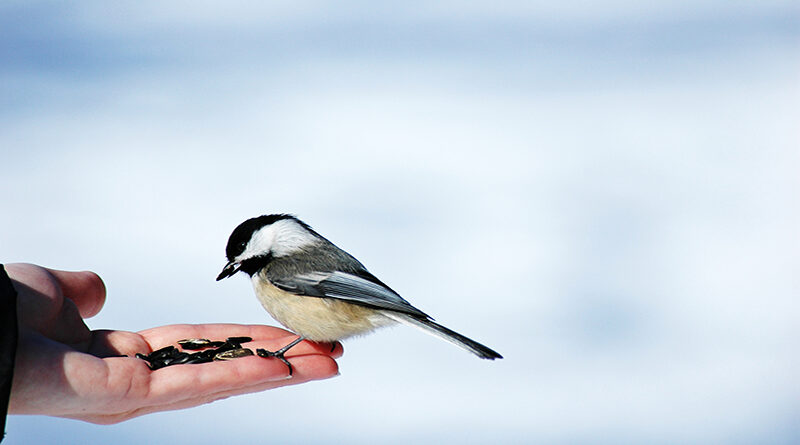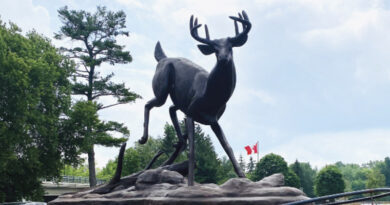For The Birds
The temperature has dipped to minus 20 degrees Celsius. Wind is whipping snowflakes into white swirls and pine boughs are bending under the weight of growing mounds of snow. We are cozy and warm inside while birds do their best to make it through the extremes of winter. How do they do it?
It turns out that birds have some unique adaptations. Their feathers offer great insulation and to retain heat, they can fluff up their feathers, trapping warm air. Birds can reduce blood flow to their feet, saving this for their core and they are champion shiverers. Most importantly they stay active and eat constantly. A black-capped chickadee needs to eat one-third of its body weight each day during the winter, to survive.
You can help our feathered friends by making simple bird feeders. Here are a few examples:
Pinecone Feeder:
You’ll need pinecones, suet (animal or vegetable shortening), peanut butter, black oil sunflower seeds, wax paper and string.
Gather some cones. Mix a ration of ½ peanut butter and 1/2 shortening together. Use a kitchen knife to smear this mixture all around the pinecone. Cram into each nook and crevice. Spread black oil sunflower seeds on a plate and roll the pinecone until it is liberally coated with seeds. Tie a string at the tip making sure it is securely fastened. Hang in a branch of a nearby tree and watch to see who comes and visits. This is a tasty treat for nuthatches, blue jays and chickadees.
Log Feeder:
You’ll need a power drill for this one. As well as suet or shortening, a bird seed mix and an eye hook.
Find a log about 6 inches (20 cm) in width and 14 inches (30 cm) long. Use a 1 ½ inch drill bit and make a series of holes about 1 ½ inches deep (make sure you have adult supervision). You’ll need about 6 or so holes. Mix the suet and seed together and cram this mixture into each hole. Attach the eye hook at the top of the log, tie string to the hook and hang in a nearby tree. Woodpeckers especially love this feeder. The fat from the suet and the seeds, provide much needed energy to fight the cold.
Hand Feed Chickadees
After your birds have come to visit your feeders, you can train chickadees to land in your hand! To do this you need patience and perseverance. Remove the feeders (temporarily) and stand exactly where the feeders were located. Fill your hands with black oil sunflower seeds, extend them outwards and stay very still (bird feeders don’t move and neither should you!). Try not to flinch if a chickadee lands in your hand. The touch of their tiny feet and a gentle brush of their feathers is a magical feeling that you won’t soon forget. And once they become accustomed to landing on your hand, they’ll keep coming back. Happy feeding!
Submitted by Jacob Rodenburg, Author & Executive Director of Camp Kawartha, an award-winning outdoor education centre and summer camp.




